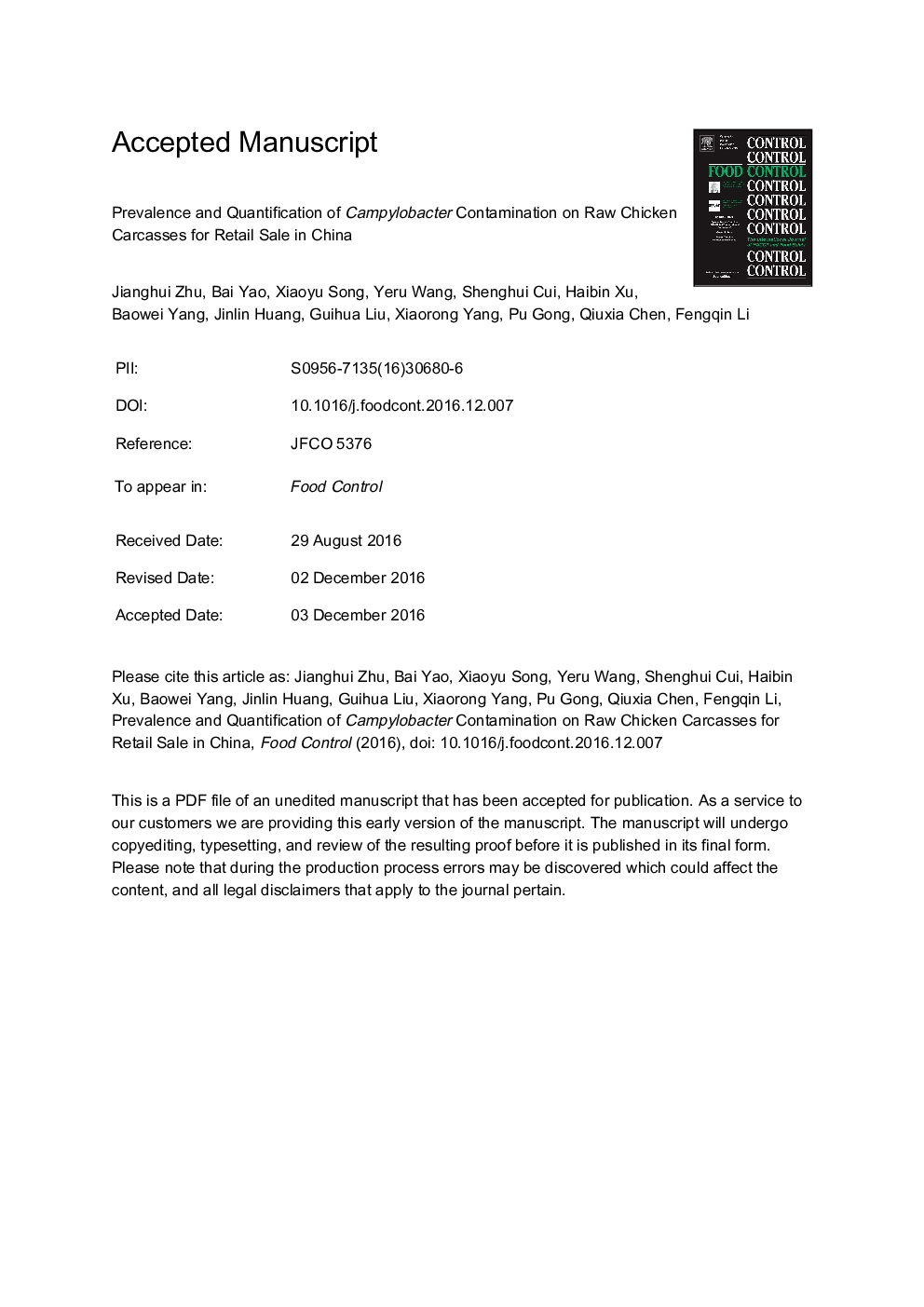| Article ID | Journal | Published Year | Pages | File Type |
|---|---|---|---|---|
| 5767407 | Food Control | 2017 | 23 Pages |
Abstract
The quantitative contamination load of Campylobacter on raw chicken carcasses at retail outlets in seven provinces and cities of China was determined. A total of 1587 carcasses over 12 consecutive months were sampled. The overall Campylobacter contamination rate was 45.1% and 19.8% of contaminated carcasses was higher in the load than 3.0 log10CFU/g. The median load was 2.1 log10CFU/g with 1.4 log10CFU/g as the 25th percentile and 2.9 log10CFU/g as the 75th percentile, respectively. Using logistic regression, it observed the significant provincial and monthly variations in prevalence, freshly slaughtered chicken carcasses (63.1%) were found to be 2.3 times higher compared to chilled carcasses (32.9%), while no statistical significance was observed in prevalence among chicken carcasses that had various packaging solution (P = 0.370) nor from different market types (P = 0.680) suggesting that possible cross-contamination had occurred during processing and transportation. The present study found that 52.1%, 59.9%, 2.9%, 8.8% and 8.3% of carcasses were contaminated with C. jejuni, C. coli, C. lari, C. fetus, and C. upsaliensis, respectively. A higher proportion of C. coli (45.4%) than C. jejuni (39.5%) were cultured from the contaminated carcasses and this finding was suggestive of a high degree of cross-contamination occurred not just among poultry products, but also with pork products before/at retail points in China. This study provided quantitative data suitable for a risk assessment model designed to evaluate useful intervention methods to facilitate a reduction in the risk of campylobacteriosis arising from the consumption of contaminated domestically produced chicken meat in China.
Related Topics
Life Sciences
Agricultural and Biological Sciences
Food Science
Authors
Jianghui Zhu, Bai Yao, Xiaoyu Song, Yeru Wang, Shenghui Cui, Haibin Xu, Baowei Yang, Jinlin Huang, Guihua Liu, Xiaorong Yang, Pu Gong, Qiuxia Chen, Fengqin Li,
